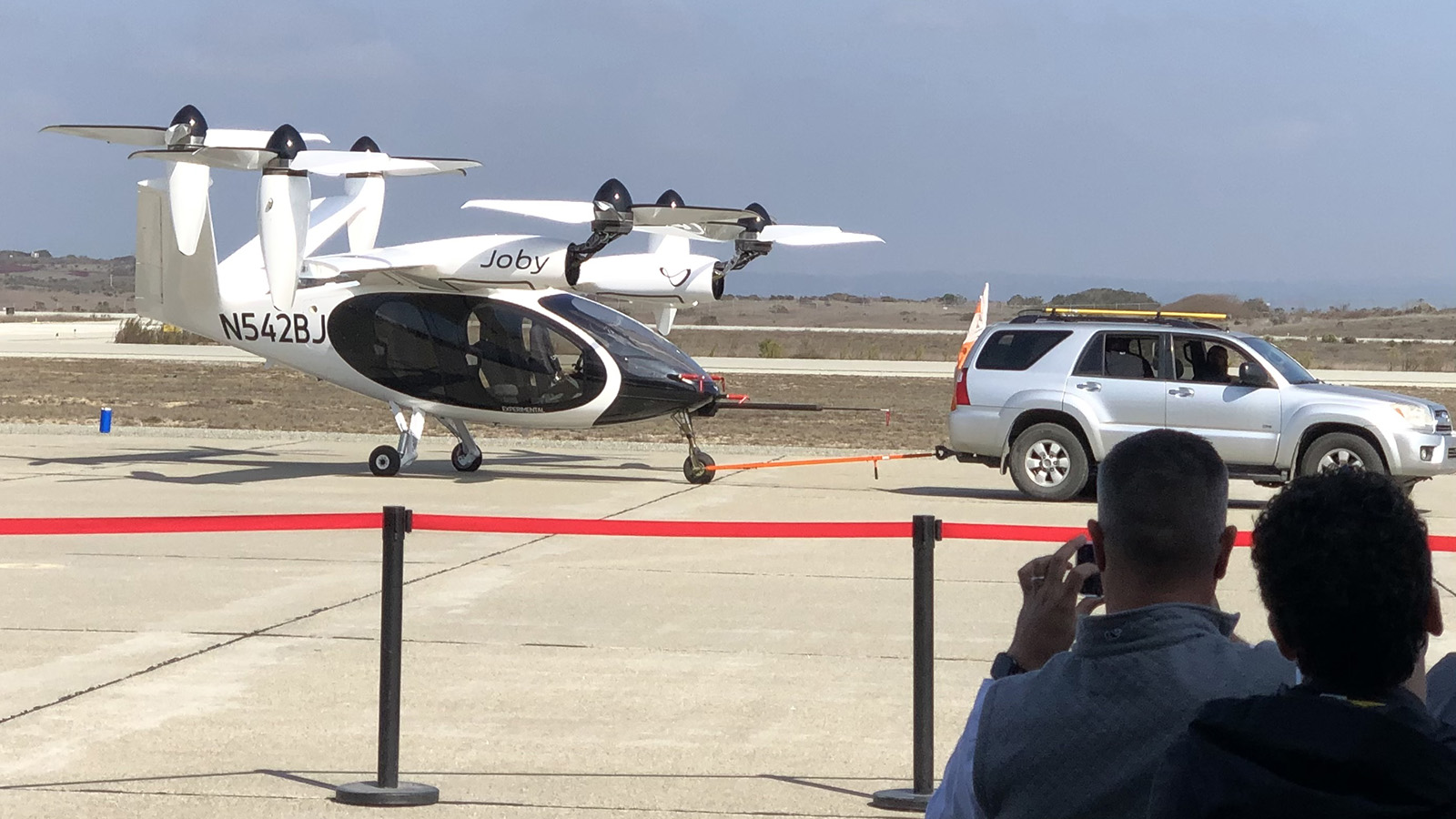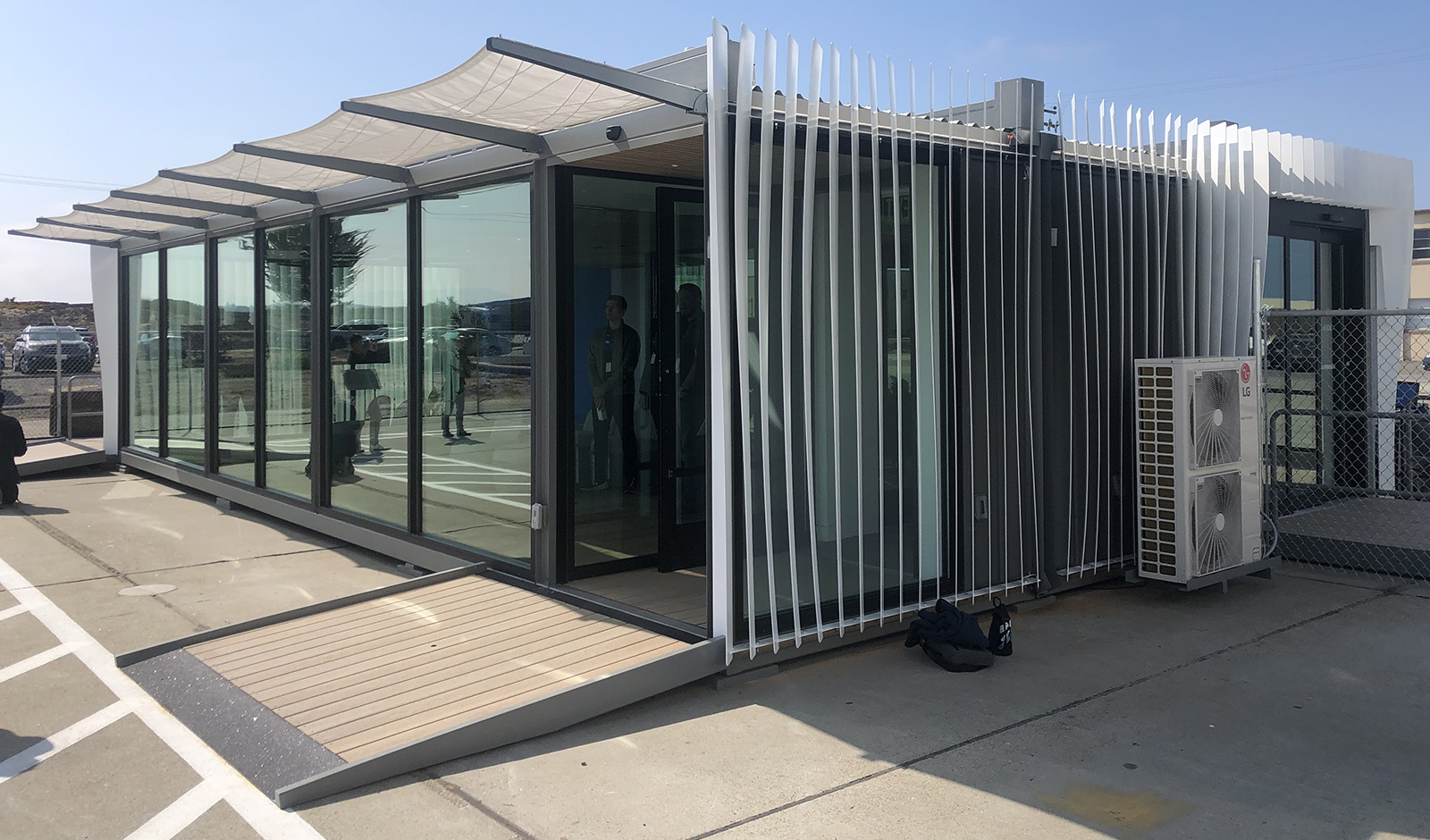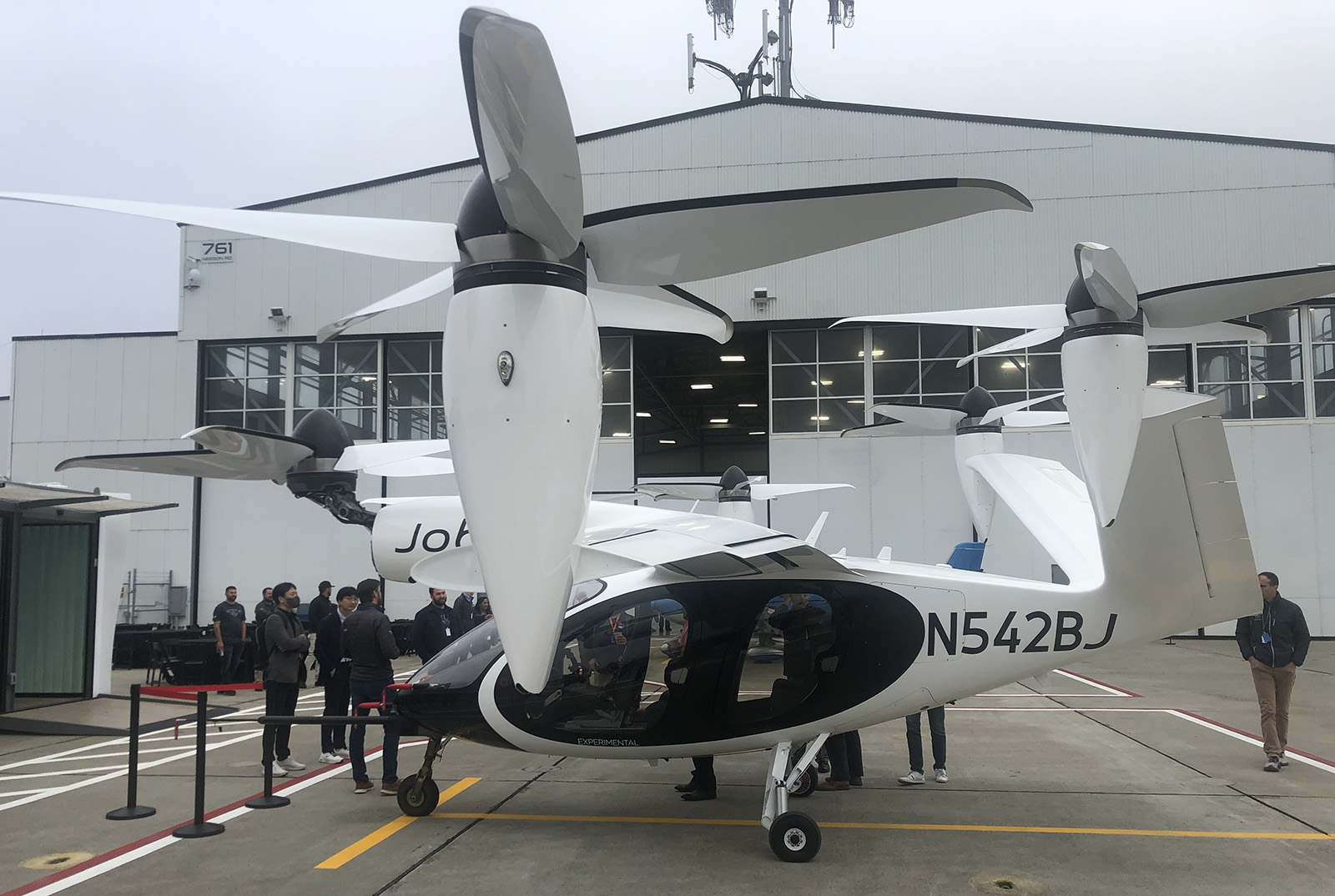Stay Up to Date
Submit your email address to receive the latest industry and Aerospace America news.
Joby follows the lead of SpaceX, Tesla by adopting vertical integration
MARINA MUNICIPAL AIRPORT, Marina, Calif. — The futuristic, white aircraft gave off a steady whir as it rose vertically about 100 meters away from me and other guests, then tilted its rotors as it transitioned to forward flight and began circling the airport with a chase plane and helicopter following for parts of the journey.
This is the S4, a precursor to the production prototype aircraft that Joby Aviation plans to manufacture here ahead of its plan to begin flying passengers in 2024 under the promised advanced air mobility revolution. This eVTOL, electric vertical takeoff and landing aircraft, was flown unoccupied and controlled from a platform where pilots monitored computer screens, but Joby knows it will need to put a pilot aboard to earn full FAA certification.
The company hosted about 150 guests Thursday, including analysts, investors and a few journalists including me, to explain its production processes and give us this remotely piloted demonstration.
The S4 passed near us five times, twice by itself and three times with the other aircraft. While noise from the S4 was audible from the ground as it flew around 500 feet in altitude, it was noticeably quieter than the helicopter and small plane. The Joby craft reached a maximum altitude of 1,000 feet during the test flight and hit a top speed of 185 kilometers per hour.
Regarding production, the big message was that Joby plans to keep most equipment and systems manufacturing in-house through vertical integration.
“We’re building a new generation of aviation company, and it will be similar to what Tesla did when they built their technology stack and retained vertical integration, and all that has meant for electric vehicles,” founder and CEO JoeBen Bevirt told us in an outdoor presentation after the S4 landed. “This is what SpaceX has done in the space industry by integrating the design, the manufacturing and the testing in a tight loop.”
Bevirt said vertical integration means Joby can “do things that are really transformational, move faster and accelerate the process.”
Joby’s presence is spread among eight buildings here at the Marina airport, including a large hangar and a domed tentlike structure where coatings and adhesives are applied to carbon fiber composite structures.
In the composite manufacturing facility, employees monitored towering, whining robotic machines as they built large, black sections of the airframe.
In the next room, another robotic unit scanned a piece of airframe via ultrasound, while a technician inspected yet another piece by aiming colored light beams at it with a handheld laser measuring tool.
Ten employees from Joby’s largest investor, Toyota, are embedded in the production crews, said Jamie Clark, general manager of flying mobility for Toyota Motor North America. The automaker announced a $394 million investment in Joby in 2020.
“Toyota is transforming into a mobility company, rather than simply producing vehicles,” Clark told us on the production floor.
He added: “We bring our expertise in process and production, but we also learn from Joby about agility and thinking outside the box.”
Joby is pursuing FAA type certification for its aircraft, which the company believes it will receive by 2024 for a piloted craft with four passenger seats. So far it has received its Part 135 Air Carrier Certificate and is certified by the military to conduct research flights for the U.S. Air Force Agility Prime program.
While Joby’s primary initial goal is passenger service, cargo and other types of delivery may happen later. “We think logistics is a piece that can be tacked on,” said Paul Sciarra, executive chairman of the company’s board of directors. “Think of Uber taking advantage of its fleet of vehicles and basically layering on UberEats.”
Sciarra and Bevirt said the company hasn’t ruled out autonomous, or remotely piloted, passenger service, but they believe the fastest way to commercial operations is with a pilot. Bevirt said some level of unpiloted flight would come in a second phase of operations.
We were also shown around by Joby’s lead for powertrain and electronics, Jon Wagner, who came to Joby in 2017 from Tesla, where he was senior director for battery engineering.
“We knew from an early stage at Joby that we weren’t going to just remove an engine, remove a fuel tank, replace them with the battery pack and electric motor and call it a great airplane,” Wagner told us. “And so, we decided to invest in developing the core technologies in a variety of areas that allow us to design the components that are going to work best to make an electric aircraft.”
He continued: “We also found the advantages of integration, where we’re not playing one supplier off of another and trying to draw a line between them. We own both sides, and we can blur the lines and integrate those parts in a much more efficient way, driving down weight and complexity.”
Get the latest news about advanced air mobility delivered to your inbox every two weeks.
About paul brinkmann
Paul covers advanced air mobility, space launches and more for our website and the quarterly magazine. Paul joined us in 2022 and is based near Kennedy Space Center in Florida. He previously covered aerospace for United Press International and the Orlando Sentinel.
Related Posts
Stay Up to Date
Submit your email address to receive the latest industry and Aerospace America news.






